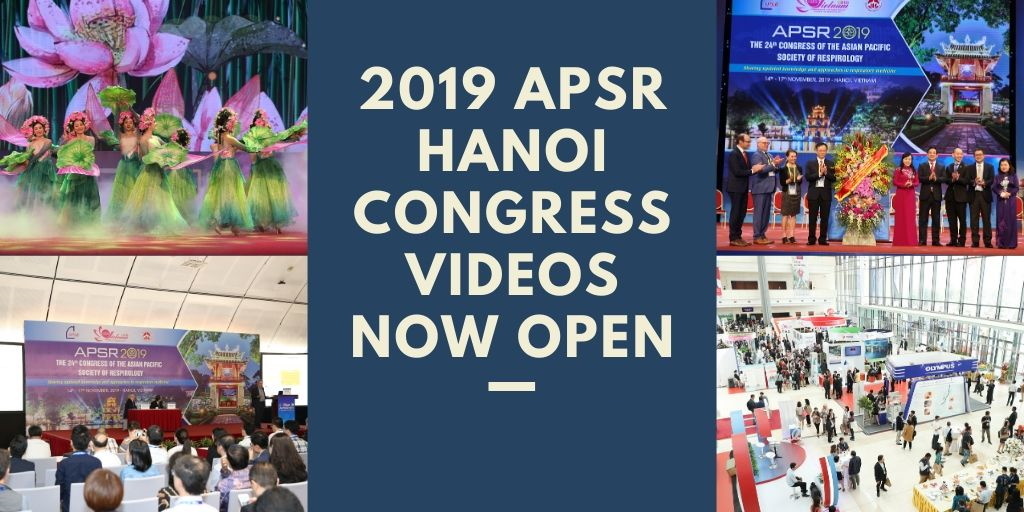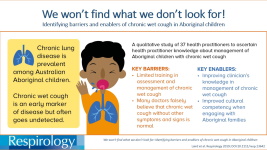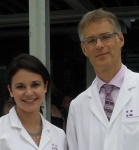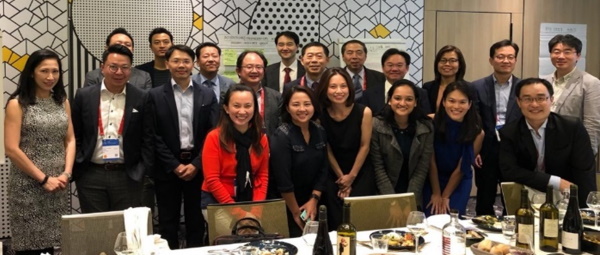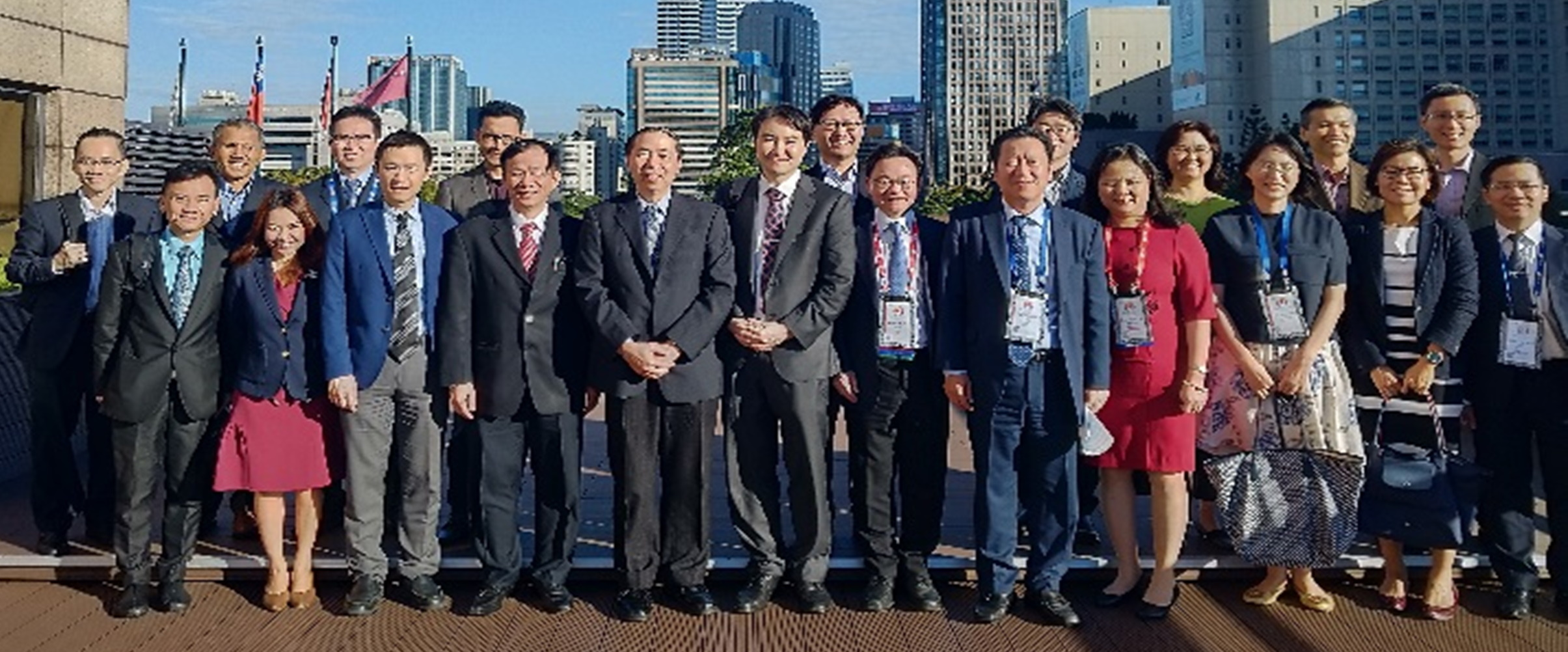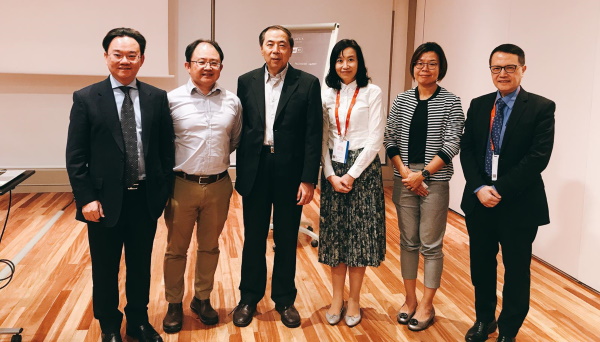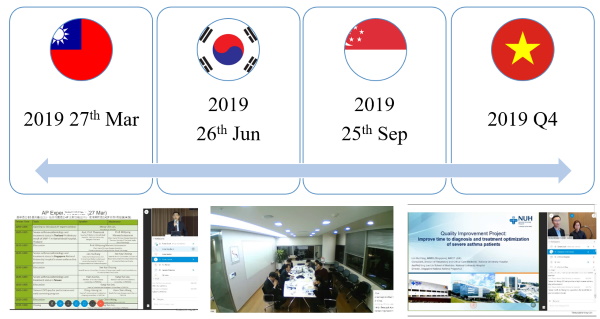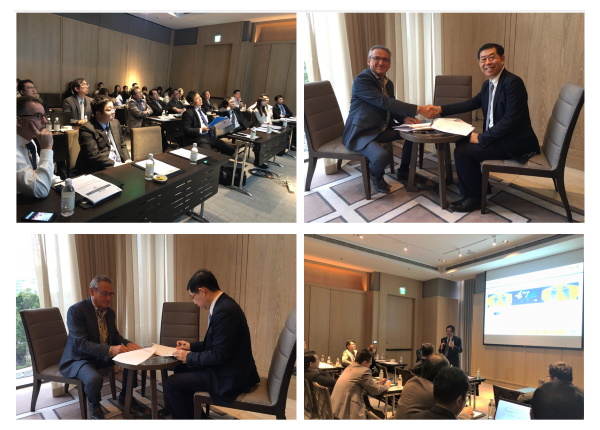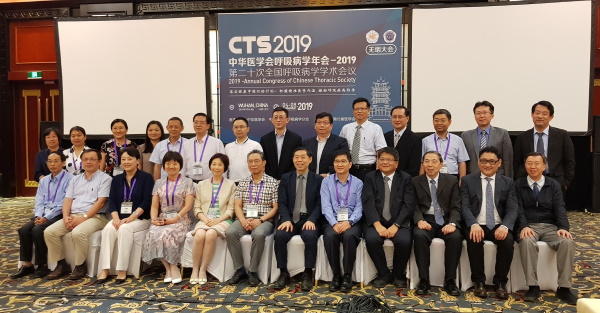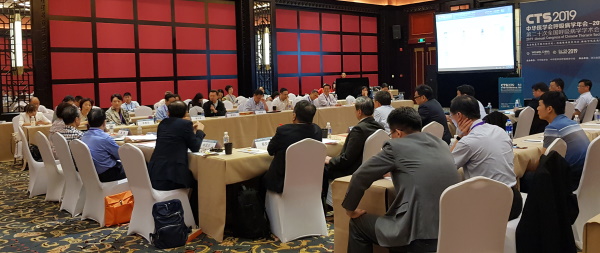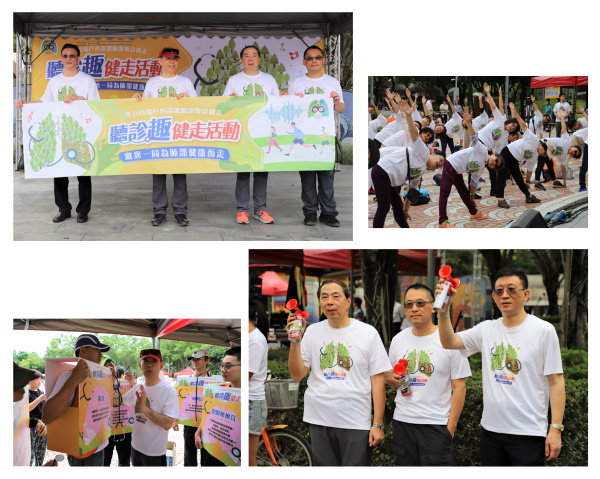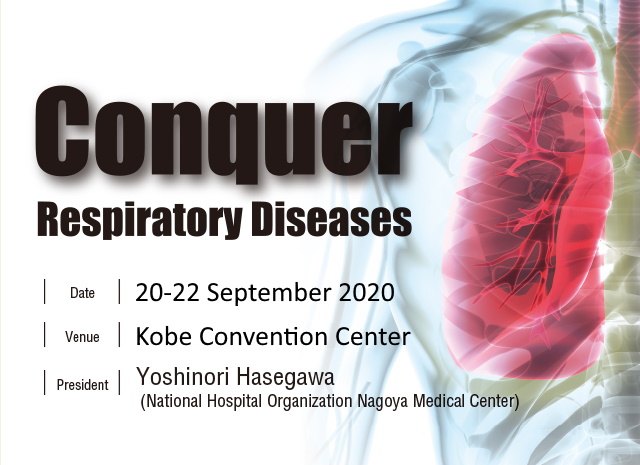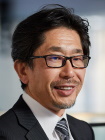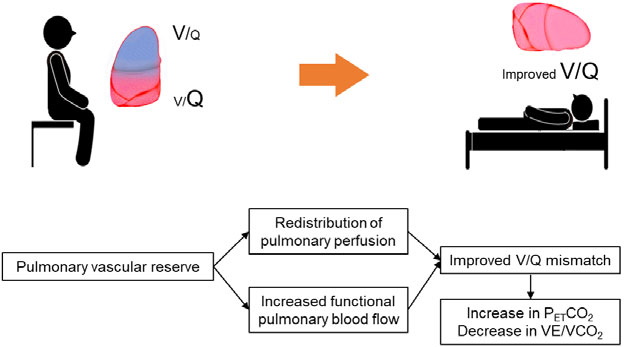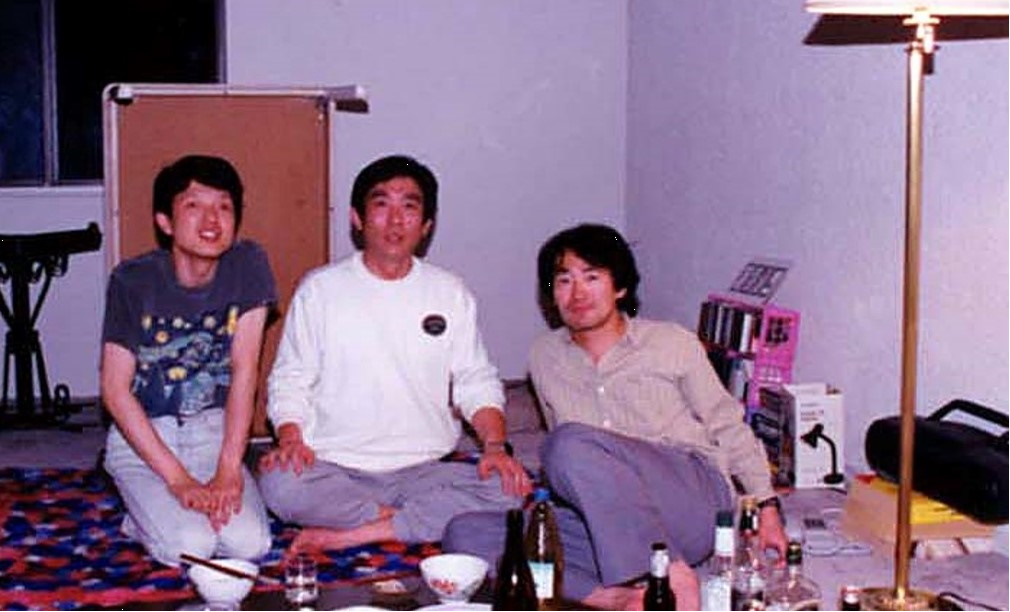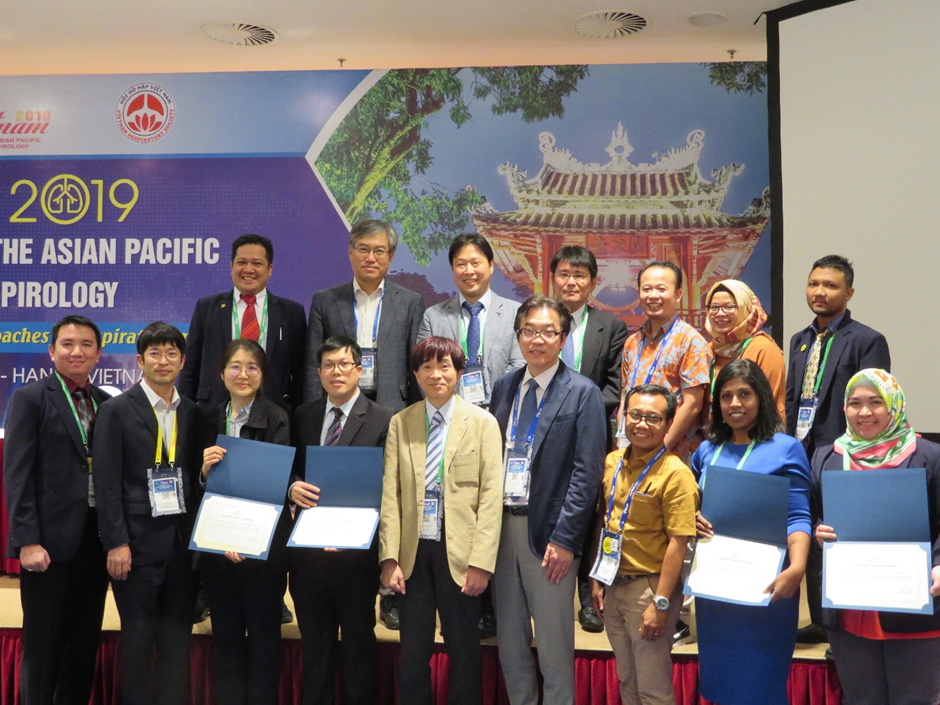

No. 129 (April 2020)
Latest news COVID-19
Message from Dr Kwun Fong
Immediate past president of the APSR
This Bulletin comes during the time of an unprecedented global challenge from the COVID-19 pandemic, which has touched most if not all parts of the world. Our region too has seen many cases and sadly also fatalities with APSR members having first-hand experience, being part of the front line health carers working to help affected people.
This work means that APSR members themselves may be exposed to infection and so APSR would like to express support and appreciation for its members who partake in the health care teams who selflessly care for our people and communities.
Please do take good care of yourselves and families by staying aware of the latest information on the COVID-19 outbreak, available on the WHO website and through your national and local public health authority:
- Public advisories who.int/emergencies/diseases/novel-coronavirus-2019/advice-for-public (updated regularly)
- Situation reports who.int/emergencies/diseases/novel-coronavirus-2019/situation-reports (updated daily)
Please reach out to APSR via its Secretariat if you think there is something APSR can help with. We stand together in this difficult time.
ATS/APSR webinar on COVID-19
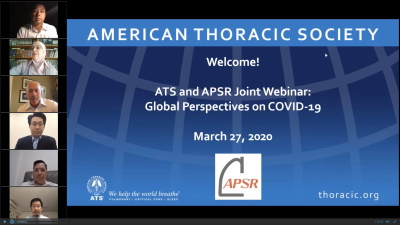
If you missed the live webinar on 27 March 18:00 EDT (28 March a.m. in the APSR region), you can see a recording of it on the ATS website.
The webinar was hosted by the ATS and featured eminent APSR respiratory specialists:
- Dr Yuanlin Song (China)
- Dr David C L Lam (Hong Kong)
- Dr David S C Hui (Hong Kong)
- Dr Man-Po Lee (Hong Kong)
- Dr Gee Young Suh (Republic of Korea)
- Dr Puah Ser Hon (Singapore)
New hospital responds by opening early
In response to calls from the Japanese government a new university hospital opened ahead of schedule. Its laboratory has high-performance real-time PCR machines, which will help rapid diagnosis of diseases such as COVID-19.
See report below.
Date changes resulting from the pandemic
The SARS-CoV-2 virus has caused some conferences and events to be cancelled or postponed. These include:
- 129th Conference of the Korean Academy of Tuberculosis and Respiratory Diseases (KATRD) which was scheduled to be held on 11 April 2020 in Yeosu City, Republic of Korea. See lungkorea.org/eng for details of the new schedules.
- 60th Annual Meeting of the Japanese Respiratory Society, originally scheduled for 24-26 April 2020 in Nagoya and now postponed to 20-22 September 2020 at the Kobe Convention Center, Japan. See www.jrs.or.jp/jrs60/en/index.html for details.
- The 2020 TSANZ Annual Scientific Meeting in Melbourne has also been postponed. Originally scheduled for 27-31 March this year, the Meeting will now be held next year, on 30 April - 4 May 2021. See www.tsanzsrs2021.com for details.
- The ATS 2020 International Conference scheduled for 15–20 May 2020 in Philadelphia, USA, has been cancelled. For registration refunds, hotel accommodation refunds for bookings made through the ATS housing partner, and complimentary registration arrangements, see below for details.
If you are planning to attend any other event in the near future, check the relevant website for updates. Please also let the APSR Secretariat know of any changes you see, so we can alert your colleagues.
Virtual virus
Be aware that as a respiratory specialist, you are a prime target for scams.
The coronavirus outbreak is being used by criminals as an opportunity to try to trick people, particularly via email and text messages. If you get an email with an attachment or link that offers advice, supplies or anything related to the virus, it could be a scam.
Please remember not to click on any links or attachments unless you know they are safe.
APSR News
Good news!
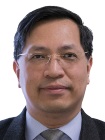
Dr Lam
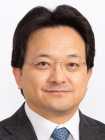
Dr Nishioka
We are honoured and delighted to announce the selection of two important APSR officers. Dr David CL Lam, the new APSR Secretary General, and Dr Yasuhiko Nishioka, the new APSR Treasurer.
The APSR President Dr Nakanishi is busily continuing the many useful projects introduced by his predecessor, Dr Kwun Fong, supported even more by Dr Lam and Dr Nishioka in their new roles, along with the other APSR officers. All of these people are volunteering their time and resources for the benefit of the APSR membership, and will welcome your support.
The APSR has several committees, assemblies and councils, offering many ways for you to get involved which will enhance your skills and experiences.
It is quite remarkable how so many members are supporting the Society through their committee membership, and have been doing so for many years. A list has been compiled of current and past officers and committee members, which you are invited to preview and make sure we've recorded your name and role(s) correctly.
Please see apsresp.org/about/appointees.php and let contact us if any details are missing or need correcting.
To help others be aware of the contributions made by all the committee members, we plan to add this information to the APSR website and are keen to ensure its accuracy.
Free online access to 2019 Hanoi Congress sessions
Free access to 62 of the best sessions by prominent doctors recorded at the APSR Congress in Hanoi
Visit apsresp.org/congress/apsr2019/streaming.php The videos are available online until the end of April 2020.
2020 Kyoto Congress news
Japan's old capital Kyoto has countless well-known and popular tourist spots, but there are also hidden gems you shouldn't miss on your trip to Kyoto and take full advantage of the beautiful autumn colours.
The Rurikoin Temple for example, is 10 minutes by taxi or 35 minutes walking exercise from Kyoto International Conference Center. It's normally only open to visitors in the spring and autumn. (Check the temple website for details rurikoin.komyoji.com/lp/en) If it's closed, there are 1,600 other temples in the city.
Much closer to the conference hall is the huge Takaragaike Park, famed for birds and other wildlife such as turtles and large koi in the lake. The best chance of seeing wild deer in the wooded part is soon after sunrise.
There are countless other tips you can find on the internet, bursting with personal blogs from people who have enjoyed their experiences in Kyoto, giving you an opportunity to explore the area before you go.
And don't forget the congress, of course. Registration is now open and abstracts are being accepted. See www.apsr2021.jp for the latest details.
apsr2021.jp is the official and only APSR Congress website.
Poster award opportunity
Adding to the lengthening list of APSR awards available for attendees at the APSR Congress, we are pleased to announce the availability of the Respirology Case Reports Poster Award for the second year, at the APSR 2020 congress in Kyoto. This award creates an opportunity for eligible case report poster presenters at the APSR 2020 congress to meet the Editor in chief of Respirology Case Reports and get assistance to submit their manuscript to Respirology Case Reports.
Award includes:
- Offer of assistance by the Editors and Editorial Office of Respirology Case Reports to improve the quality of the actual case report manuscript, if needed, to enhance its chance of acceptance,
and - a waiver of publication fee if accepted.
Note: Acceptance is not guaranteed by this award as it is subject to the view of the external peer-review and the editor in chief as part of our usual peer-review process.
Eligibility:
- This award is open to authors of posters presenting a case report or case series suitable for Respirology Case Reports.
- To be eligible, the author must attend the APSR 2020 Congress and if short-listed, must attend the "Meet the Editor in chief" event at the congress, and present and discuss their case with the selection committee and the Editor in chief of Respirology Case Reports.
Abstract submission deadline:
- See Congress website apsr2021.jp/abstracts&awards/guidelines
Award presentation:
- At the APSR congress (to be confirmed).
Post-congress requirements:
- If awarded, the author must submit their case report manuscript to Respirology Case Reports within three months.
Application / selection procedure:
- All posters presenting a case report or case series will be considered.
- To be considered, authors must submit an abstract to the APSR conference presenting a case report or case series and tick the box, case report.
- A short-list will be selected by the APSR selection committee amongst the authors approved to present a poster and presenting a case report or case series. The final selection will be made by the Editor in chief of Respirology Case Reports and the selection committee after presentation by the short-listed authors during the "Meet the Editor in chief" event at the APSR Congress.
Showcase:
The winning case report at the 2019 Congress was accepted for publication and can be seen at onlinelibrary.wiley.com/doi/10.1002/rcr2.544
Respiratory Updates
Grateful thanks to the Editorial Office in Perth for providing material for the February issue (Vol 12.2) which features Top 10 most downloaded articles published in Respirology in 2019:
- Assessing the impact of diet, exercise and the combination of the two as a treatment for OSA: A systematic review and meta-analysis.
- Indacaterol/glycopyrronium versus tiotropium or glycopyrronium in long-acting bronchodilatornaïve COPD patients: A pooled analysis.
- Real-life effectiveness of inhaler device switch from dry powder inhalers to pressurized metreddose inhalers in patients with asthma treated with ICS/LABA.
- Efficacy of corticosteroid and intravenous cyclophosphamide in acute exacerbation of idiopathic pulmonary fibrosis: A propensity score-matched analysis.
- Molecular breath analysis supports altered amino acid metabolism in idiopathic pulmonary fibrosis.
- Quantitative CT-derived vessel metrics in idiopathic pulmonary fibrosis: A structure–function study.
- Nasal high-flow therapy compared with non-invasive ventilation in COPD patients with chronic respiratory failure: A randomized controlled cross-over trial.
- Recombinant thrombomodulin for acute exacerbation in idiopathic interstitial pneumonias.
- Therapeutic burden in interstitial lung disease: Lessons to learn.
- Idiopathic chronic productive cough and response to open-label macrolide therapy: An observational study.
Inside Respirology
Respirology Vol. 25 Issue 4
| EDITORIALS | |
| 348 | Women in medicine: The Henry Higgins problem |
| 350 | How do we improve health care? The example of missed opportunities to address chronic wet cough in children in remote Australia |
| 352 | One bronchodilator or two? Translating clinical trials into clinical practice |
| 354 | Postural changes from ventilatory gas exchange in pulmonary hypertension: Is it a practical solution to a complex question? |
| 356 | Obesity hypoventilation syndrome: Stretching the health dollar |
| 358 | BPAP for CPAP failures: For the many or the few |
| COMMENTARY | |
| 360 | Equality for women in respiratory and sleep medicine in the Asia-Pacific region: Opportunities for change |
| INVITED REVIEW SERIES | |
| New frontiers in sleep-disordered breathing | |
| 363 | Strategies to augment adherence in the management of sleep-disordered breathing |
| 372 | Advances in non-invasive positive airway pressure technology |
| ORIGINAL ARTICLES | |
| Bronchiectasis | |
| 383 |
 |
| COPD | |
| 393 | Indacaterol/glycopyrronium versus tiotropium or glycopyrronium in long-acting bronchodilator-naïve COPD patients: A pooled analysis |
| 401 | Comparison of pre- and post-bronchodilator lung function as predictors of mortality: The HUNT Study |
| Interstitial Lung Disease | |
| 410 | Long-term treatment with nintedanib in Asian patients with idiopathic pulmonary fibrosis: Results from INPULSIS®-ON |
| 417 | Mesenchymal stem cells reduce ER stress via PERK-Nrf2 pathway in an aged mouse model |
| Pulmonary Vascular Disease | |
| 427 | Non-invasive screening using ventilatory gas analysis to distinguish between chronic thromboembolic pulmonary hypertension and pulmonary arterial hypertension |
| Sleep and Ventilation | |
| 435 |
 |
| 443 | BPAP is an effective second-line therapy for obese patients with OSA failing regular CPAP: A prospective observational cohort study |
| CONTEMPORARY CONCISE REVIEW | |
| 449 | Contemporary Concise Review 2019: Chronic obstructive pulmonary disease |
| LETTER FROM ASIA-PACIFIC AND BEYOND | |
| 455 | Letter from Jordan |
| FORUM AND DEBATE | |
| Correspondence | |
| 456 | Step-down from non-invasive ventilation to continuous positive airway pressure: A better phenotyping is required |
| 457 | Step-down from non-invasive ventilation to continuous positive airway pressure: A better phenotyping is required – Reply |
Inside Respirology Case Reports
The following cases have been selected for inclusion in the April 2020 Respirology Case Reports, Volume 08 Issue 3
Case Series
| Clinical manifestations in patients with PI*MMMalton genotypes. A matter still unsolved in alpha-1 antitrypsin deficiency |
Case Reports
| Transnasal humidified rapid insufflation ventilatory exchange during bronchoscopy in severe pulmonary hypertension due to Gerbode defect |
| Severe acute respiratory failure due to a multifactorial diffuse alveolar haemorrhage |
| Unusual aetiology of lymphocyte-predominant exudative pleural effusion: primary mediastinal actinomycosis |
| Rare case of vascular ring with Kommerell diverticulum mimicking uncontrolled asthma |
| Remarkable response to nivolumab in sarcomatoid malignant pleural mesothelioma with high PD-L1 |
| New perspectives for a huge traumatic pneumatocele treatment in a young adult |
| Silicone pneumonitis after gluteal filler: a case report and literature review |
| Honeycomb lung-like structures resulting from clustering of traction bronchiectasis distally in sarcoidosis |
| Pulmonary lymphangitic carcinomatosis from gallbladder cancer mimicking diffuse alveolar haemorrhage |
| Severe clopidogrel-induced DRESS with eosinophilic pneumonia associated with Epstein–Barr virus reactivation |
| Durvalumab induced sarcoid-like pulmonary lymphadenopathy |
| Cholecystectomy under thoracic epidural anaesthesia for patient with severe intra-pulmonary shunt |
| Management of extensive subcutaneous emphysema using negative pressure wound therapy dressings |
| Vogt–Koyanagi–Harada disease during chemoimmunotherapy for non-small cell lung cancer |
| A case of primary pleural synovial sarcoma with endobronchial recurrence |
| Surgical treatment of micronodular thymoma with lymphoid stroma |
Clinical Image
| Pneumonia in Parkinson's disease: barium aspiration in videofluoroscopic swallowing study |
Regional society news
The spotlight this month is on
TAIWAN
Each month we share details of activities of a particular country, region or society.
If you would like the spotlight to be on your country, region or society next month, contact the Bulletin Coordinator or APSR Secretariat.
APSR Councillor's Report from Taiwan
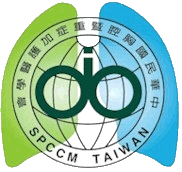
The following activities were organized by the Taiwan Society of Pulmonary & Critical Care Medicine (TSPCCM) in 2019.
Asia-Pacific Expert Meetings
- The prevalence rate for airway diseases is high all over the world, and it is a great opportunity to collaborate with the experts across the Asia-Pacific region to learn and work together to manage the airway disease.
- The meeting was established in September 2018 at the ERS Congress and followed in November at the APSR Congress, and again at the ERS in 2019. In addition to such face-to-face meetings, quarterly webinars will be the platform to share the experience and the clinical practice with other countries.
- Experts within Asia-Pacific not only discussed the expertise they are interested in, but also sought any opportunity to cooperate with other countries in the future. Through the face-to-face meetings, they broaden their dialogue deeply to share their clinical experience and exchange their key learning.
- Forum/Webinar plan for 2019, from seven countries, with around 85 experts from across the Asia-Pacific region
ISAR Meeting
- The ISAR team had the opportunity to meet with Taiwanese collaborators on 4 May 2019 during the Taiwan Respiratory Week.
- Over 30 professionals gathered to understand the ISAR initiative and its impact on severe asthma research, and were delighted to help bring this international academic project to Taiwan this year!
2019 Annual Congress of the Chinese Thoracic Society
IPF 919 Walking activity
2019 Press conference
Other regional news:
Australia and New Zealand
The 2020 TSANZ Annual Scientific Meeting in Melbourne has been postponed due to the coronavirus pandemic. Originally scheduled for 27-31 March this year, the Meeting will now be held next year, on 30 April - 4 May 2021.
Please check the TSANZ webpage www.tsanzsrs2021.com for the latest details.
China
The date has changed for the World Congress of Bronchology & Interventional Pulmonology (WCBIP), biennial flagship international congress of the WABIP (World Association of Bronchology & Interventional Pulmonology).
This had been scheduled to be held in Shanghai, China, on 16-19 April 2020 and has been postponed to 24-27 September 2020 due to the coronavirus pandemic.
Please check the WABIP webpage www.wabip.com/congress for the latest details.
Japan
The date has changed for the 60th Annual Meeting of the Japanese Respiratory Society
This had been scheduled to be held in Nagoya on 24-26 April 2020 in Nagoya and has been postponed to 20-22 September 2020 due to the coronavirus pandemic. The venue has also been changed and the Annual Meeting will now be held at the Kobe Convention Center, Japan.
Please check the JRS webpage www.jrs.or.jp/jrs60/en/index.html for the latest details.
New hospital opens
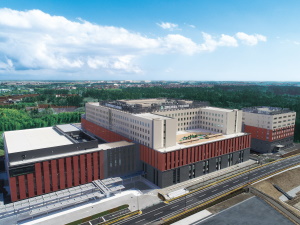
IUHW Narita Hospital, a Designated Medical Institution for Class I Infectious Diseases
naritahospital.iuhw.ac.jp
A newly opened University Hospital close to Narita International Airport, Japan
Dear colleagues,
I would like to acknowledge those who are working hard to combat the global crisis against an invisible enemy, SARS-CoV-2.
The International University of Health and Welfare (IUHW) that established a school of medicine in 2017 has just opened a new hospital in Narita, Japan on 16 March 2020. The hospital had been scheduled to open in April but the date was brought forward following a strong request from the government in need of hospitals that can manage infectious diseases with a high-standard of care.
The IUHW Narita Hospital consists of 41 departments and features various centers including the Center for Genomic Diagnosis, the Radiotherapy Cancer Center, and the International Clinical Center for Infectious Diseases. I am a director of Department of Anesthesiology and Intensive Care Medicine. Our hospital has 20 operating theaters, 16 ICU beds, and 16 HCU beds. All ICU beds are in private rooms, including two negative-pressure rooms and two biologically clean rooms. We are hoping that any SARS-CoV-2 infected patients admitted to our hospital will not be in such a critical condition; however, once they are in our ICU, we are ready to provide high-quality and robust intensive care.
Located near Narita International Airport, our hospital is expected to function as a point-of-entry institution dedicated to preventing the spread of pathogens in Japan. Our laboratory has high-performance real-time PCR machines, which will help us diagnose diseases such as COVID-19 in a timely fashion. Furthermore, in the near future, Narita Hospital as a hub hospital within Asia, will be welcoming patients from abroad seeking high-quality medical treatments or medical checkups.
We are here to form a scrum with you in a battle against a microscopic yet giant enemy, SARS-CoV-2, with a desire to vanquish it effectively.
Kiyoyasu Kurahashi, MD, PhD
Professor and Chair,
Department of Anesthesiology and Intensive Care Medicine,
International University of Health and Welfare School of Medicine
Republic of Korea
29th Conference of the Korean Academy of Tuberculosis and Respiratory Diseases (KATRD) which was scheduled to be held on 11 April 2020 in Yeosu City, Republic of Korea, has been cancelled due to the coronavirus pandemic.
Please check the KATRD webpage lungkorea.org/eng for details of the new schedules.
USA
Regarding the ATS International Conference scheduled for 15-20 May 2020, the following letter was sent from the ATS to the APSR on 24 March
We regret to inform you that the American Thoracic Society has decided to cancel the International Conference, originally scheduled for May 15-20, 2020 in Philadelphia, due to the COVID-19 epidemic and ensuing public health crisis currently facing the global community.
As this public health crisis continues, please keep a few things in mind. First, the ATS remains steadfast in its commitment to global respiratory health in this moment of crisis. We are dedicated to supporting you, your community, and fellow respiratory health professionals in the joint mission of fighting this pandemic.
Secondly, please inform your members that ATS will provide 100% refunds to all attendees who have registered for the conference. We are working to make refunds for registrations and hotel rooms that were booked through the ATS housing partner a seamless process and will be issuing options soon. Also, please note that complimentary registrations issued to peer societies who participated in the ATS National and Regional Respiratory Societies Survey will transfer to ATS 2021.
Lastly, your members can find additional information about ATS COVID-19-related resources at: thoracic.org/professionals/clinical-resources/disease-related-resources/novel-coronavirus.php
Please do not hesitate to reach out if you have any questions or suggestions as to how ATS can support your society during this difficult time.
Karen Collishaw, CAE
Executive Director
American Thoracic Society

Education
Teaching Library
The Teaching Library is open for your self-study. Challenging yourself to choose the correct procedure for any of the 91 cases in the Library.
Click the link on any page on the website (Education → Teaching Library) or go to apsresp.org/education/teaching-library/index.php.
Many more cases are needed for this Library and any member is welcome to submit a case through the same link as above.
Shadows of the lung
The coronavirus is causing a global shadow over all other general news; hopefully instilling better public hygiene practice and bringing lung health to public attention generally.
The annual FIRS World TB Day on 24 March was well-timed.
Read all about it here.
New educational article
The following article has recently been selected from Respirology for its specific educational value. Previous articles on further topics can be seen at apsresp.org/education/articles/index.html
Of special interest to those working in:
* Pulmonary circulation
* Clinical Respiratory Medicine
* Critical Care Medicine
Non-invasive screening using ventilatory gas analysis to distinguish between chronic thromboembolic pulmonary hypertension and pulmonary arterial hypertension Mina Akizuki, Koichiro Sugimura, Tatsuo Aoki, Takaaki Kakihana, Shunsuke Tatebe, Saori Yamamoto, Haruka Sato, Kimio Satoh, Hiroaki Shimokawa and Masahiro Kohzuki (DOI: 10.1111/resp.13618)
onlinelibrary.wiley.com/doi/10.1111/resp.13618/full (Apr 2020)
Comment by Dr Mark Lavercombe:
Differentiation of the causes of pulmonary hypertension has become more important with targeted treatments available that can change prognosis. This study demonstrates the potential utility of a simple non-invasive test to differentiate between PH and non-PH, and CTEPH and PAH. Further studies will be required to clarify test performance in other patient groups and to exclude confounders.
APSR Membership
Donations received
The following members have kindly sent their donation towards the Society's goals, as outlined at apsresp.org/members/donors.php.
- Dr Kwun Fong FAPSR
- Dr Sameer Lote FAPSR
The APSR is profoundly grateful for their generosity.
New Fellows of the APSR
Congratulations to the following members who have recently become Fellows of the APSR:
- Satyadeo Choubey FAPSR
- Hemant Kumar FAPSR
- Swetabh Purohit FAPSR
- Sameer Lote FAPSR
- Ajay Kumar Verma FAPSR
Our Members, Our Future
Continuing this series, we are delighted to share a tribute to Prof. Michiaki Mishima, prepared by Prof. Shigeo Muro.
This series complements our APSR Members' Honour Roll, on which as a member, you are welcome to add your appreciation of your mentor(s) at any time.
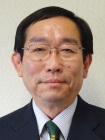
Prof. Mishima
Prof. Michiaki Mishima graduated cum laude, Faculty of Medicine, Kyoto University, Japan in 1977. After his initial training in respiratory medicine, he got his PhD degree in 1986 at the Graduate School of Medicine, Kyoto University, through the studies on the peripheral pulmonary circulation time in COPD.
I met him for the first time in June 1989 at the Kyoto University Chest Disease Research Institute Hospital when he was a lecturer there in the Department of Pulmonary Physiology. I had just started my residency with him as my mentor. He was a clinician as well as a researcher full of ideas. He had been studying the physiology in COPD, expert in mathematical analysis of the uneven distribution of ventilatory blood flow, and gave a strong impression on me as a junior resident.
From 1992 to 1994, he was abroad as a visiting researcher at Meakins Christie Laboratories, McGill University, Montreal, Canada. He performed a variety of researches at Meakins including the development and model analysis of an alveolar oscillation method that measures the peripheral lung mechanics, (i) and the effect of pleural effusion on lung volume using chest CT volumetry in dog experiments.
He is an attractive person and fascinates many friends with his humour and wit. The photo on the right shows young Prof. Takahide Nagase of Tokyo University and Prof. Hajime Kurosawa of Tohoku University, enjoying a Japanese-style private party at his apartment near Meakins.
When he returned Kyoto University in 1994, I had just completed medical training at an affiliated hospital and went on to the Graduate School of Medicine, meeting again with him and started my career as a physician scientist. During the next four years, I was given excellent and rigorous research guidance from him and Prof. Yoshitaka Oku, his colleague who is now a professor at Hyogo College of Medicine.
At that time, the department head was the late Prof. Kenshi Kuno, and Dr Mishima led his team as the associate professor. He managed both patient care and research such as mechanics, physiology and imaging in addition to COPD clinical research. His research team was extremely active and motivated to discover new findings. It was like a place of assemblage for the bold and ambitious.
One of his achievements was the introduction of the concept of fractals into image analysis and published a number of clinically important findings. (ii) Among the team members from those days, Yoshitaka Oku, Toyohiro Hirai (Kyoto University), Yasutaka Nakano (Shiga University of Medical Science), and myself (Nara Medical University), have been promoted to university professors.
Since the period when he began to supervise our degree work in the mid-90's, he seemed to have a hard time due to reorganization of the university, and there were a lot of difficulties in pursuing research. However, he always kept cheerful, optimistic and positive, and was able to finally overcome such rough waves.
In 1998, he introduced me to Dr Hamid in Meakins Christie Laboratories, and I was given the opportunity to learn the basics of airway inflammation. After finishing post-doctoral course in Meakins, I came back to Kyoto to work with Dr Mishima again in 2001. Immediately after that he was unexpectedly elected as a professor of respiratory medicine at Kyoto University Graduate School of Medicine.
From then until March 2016, he led the management of the Department of Respiratory Medicine, Graduate School of Medicine as Professor and Chairman. Many young respiratory physicians and researchers had come to join him, and his department evolved tremendously.
Throughout his career he has been specialized in the study of COPD. In particular, he has been engaged in the digital imaging of X-ray chest CT in respiratory diseases for more than twenty years and developed original computer software quantifying peripheral airway space and airway wall dimension in COPD or bronchial asthma. He found that these tools contributed much to the understanding of the phenotype and comorbidity of COPD(iii). For these achievements, his research team was awarded the 42nd Beltz Prize (First Prize) in 2005. He was also awarded John B West Medal (International Workshop of Pulmonary Functional Imaging) in 2015.
At the same time as being chairman of the Department of Respiratory Medicine, he managed all the areas of respiratory medicine: respiratory cancer, respiratory infection, COPD, asthma, interstitial pneumonitis and respiratory failure, in collaboration with Prof. Kazuo Chin who is an expert in non-invasive ventilation and respiratory care. He successfully developed a new paradigm in the regenerative study of lung tissue such as induced puluripotent stem cells with his excellent co-workers.(iv)
In addition to his management of his own department, he had a lot of activities in public agencies. He was vice director, Kyoto University Hospital from April 2008 to March 2011, and worked as director of Kyoto University Hospital from April 2011 to March 2015. In addition to activities in the medical field, he also served as executive vice president at Kyoto University from October 2012 to September 2014. Through these activities, he has established a medical exchange programme with Bhutan, through which he sent me to that country for a short time as a respiratory physician.
He also showed his extraordinary talent for organizational management outside Kyoto University. He was the chairman of the board of directors at the Japanese Respiratory Society (JRS) from 2013 to 2015. During his chairmanship term, he introduced a web membership management system and voting at elections was conducted online. Now we have a members-only page through which we can check our number of credits earned and also change our business and personal information. In addition to respiratory medicine, Dr Mishima also held and chaired the Annual Meeting of the Japanese Society of Internal Medicine in 2015.
He has made many contributions to the APSR. He chaired the APSR Research Committee, one of the important standing committees to enlighten APSR young scientists and develop the scientific programme for them up to 2010.
In 2006, Prof Yoshinosuke Fukuchi was APSR Congress President and achieved a great success of the 11th Congress of APSR in Kyoto, Japan with 2,400 academic participants from 43 countries. This congress was led by Dr Mishima as the Congress Secretary General, closely working with him and his colleagues. In 2008, he was awarded the Harasawa Research Award(v) as a prestigious lecturer at the 13th Congress of the APSR in Bangkok, Thailand.
Since 2013, he was the APSR Secretary General supporting Dr Arth Nana, APSR President, providing a lot of advice to make the Society more sophisticated and developed.
From 2014 to 2016, he was the APSR President. During his presidency, various new structures were built under his leadership such as APSR Assembly troika leadership composed by not only Assembly Heads but also Heads-Elect and Deputy Heads. He then integrated projects with congress sponsorships via the APSR Industry Task Force together with many sponsors.
In addition, as FIRS(vi) Chairman representing the APSR, he successfully led the great success of the FIRS General Assembly Meeting in Kyoto, Japan in 2016, welcoming all leaders of major respiratory societies in the world.
Dr Mishima has been Emeritus Professor of Kyoto University and President, Osaka Saiseikai Noe Hospital since 2016, and President, Osaka Saiseokai Noe Medical Welfare Center since 2018.
He has published more than 450 scientific papers in English in international journals, 40 scientific papers in Japanese, authored and contributed to several books on respiratory science, and lung image computing sciences. He is still stimulating young doctors in respiratory medicine studies, lung image computing sciences.
- Mishima M, Balassy Z, Bates JH. Assessment of local lung impedance by the alveolar capsule oscillator in dogs: a model analysis. J Appl Physiol 80(4): 1165-72, 1996.
- Mishima M, Hirai T, Itoh H, Nakano Y, Sakai H, Muro S, Nishimura K, Oku Y, Chin K, Ohi M, Nakamura T, Bates JH, Alencar AM, Suki B. Complexity of terminal airspace geometry assessed by lung computed tomography in normal subjects and patients with chronic obstructive pulmonary disease. Proc Natl Acad Sci USA. 1999 Aug 3;96(16):8829-34.
- Nakano Y, Muro S, Sakai H, Hirai T, Chin K, Tsukino M, Nishimura K, Itoh H, Paré PD, Hogg JC, Mishima M. Computed tomographic measurements of airway dimensions and emphysema in smokers. Correlation with lung function. Am J Respir Crit Care Med. 2000 Sep;162(3Pt 1):1102-8;
Tanabe N, Muro S, Hirai T, Oguma T, Terada K, Marumo S, Kinose D, Ogawa E, Hoshino Y, Mishima M. Impact of exacerbations on emphysema progression in chronic obstructive pulmonary disease. Am J Respir Crit Care Med. 2011 Jun 15;183(12):1653-9) - Gotoh S, Ito I, Nagasaki T, Yamamoto Y, Konishi S, Korogi Y, Matsumoto H, Muro S, Hirai T, Funato M, Mae S, Toyoda T, Sato-Otsubo A, Ogawa S, Osafune K, Mishima M. Generation of alveolar epithelial spheroids via isolated progenitor cells from human pluripotent stem cells. Stem Cell Reports. 2014 Sep 9;3(3):394-403.
- The annual Michiyoshi Harasawa Research award is given by the APSR in memory of the late Dr Michiyoshi Harasawa who died in September 2002. The Award is given to a person who embodies the leadership and respect of his/her peers and who excels in the field of pulmonary medicine.
- The Forum of International Respiratory Societies (FIRS) was established in 2001 by the international professional respiratory societies, the American College of Chest Physicians (CHEST), American Thoracic Society (ATS), Asian Pacific Society of Respirology (APSR), Asociación Latino Americana De Tórax (ALAT), European Respiratory Society (ERS), International Union Against Tuberculosis and Lung Diseases (The Union), and Pan African Thoracic Society (PATS). The Global Initiative for Asthma (GINA), and the Global Initiative for Chronic Obstructive Lung Disease (GOLD) joined in 2017. In total, FIRS' organizations have about 100,000 professional members working in the broad field of respiratory health.
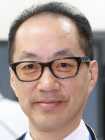
Prof. Muro
Prepared by Prof. Shigeo Muro, Department of Respiratory Medicine
Nara Medical University
Kashihara city, Nara prefecture, Japan
Assembly newsletters
The following Newsletters have recently appeared on the Assembly webpages:
Cell and Molecular Biology Assembly
The Cell and Molecular Biology Assembly aims to promote respiratory research and education for members who are interested in cutting-edge science. It makes contributions to the development of novel research techniques and distribution of up-to-date tools. It also encourages young researchers to improve their scientific skills and careers.
All APSR members who are interested in respiratory research are encouraged to join the Assembly. Especially, young members who are willing to do research, create networks, present research concepts, and improve their CV. Also senior members who wish to obtain novel knowledge and/or educate young researchers are cordially invited to join us.
Currently, our hot topics include cellular and molecular aspects of all lung diseases, especially asthma, pulmonary fibrosis, ARDS, COPD and lung cancer.
The Assembly is especially interested in
- promotion of research skills using cellular and molecular approach
- education and training regarding up-to-date techniques
- distribution of scientific knowledge
- contribution to young researchers' careers.
The Assembly members enjoyed holding successful symposia, a poster session and award presentation ceremony at the 2019 APSR Congress in Hanoi. We look forward to having fruitful symposia and poster session again at the 2020 APSR Congress in Kyoto!
Environmental & Occupational Health and Epidemiology Assembly
The Forum of International Respiratory Societies (FIRS) Environmental Committee including our assembly head has published a review article titled "Health Benefits from Air Pollution Reduction" in 2019 for Annals of American Thoracic Society.
Activities
On 15 November 2019, a commendation ceremony for excellent presentations on occupational and environmental lung disease was performed after our assembly meeting at the Congress in Hanoi. Three honoured Assembly Education Awardees were Dr Gihani Jayaweera from Sri Lanka, Dr Ratih DwiAry Merdekawati from Indonesia and Dr Youlim Kim from Republic of Korea.
Announcements
- Cases of occupational lung disease for the APSR Teaching Library are being collected by our assembly. Your teaching case or vignette will be uploaded into the Library after peer review. They should be simple cases for the education of young doctors and not yet published.
If you have suitable cases, please submit them via: apsresp.org/education/teaching-library/index.php
- On 26 September 2020, a Symposium of Environmental Lung Disease Research Group of the Korean Academy of Tuberculosis and Respiratory Diseases (KATRD) will be held at Catholic University, Seoul, Republic of Korea. Lectures on the effects of air pollution on climate change will be provided.
Respiratory Infections (non-TB) Assembly
In the Novel Coronavirus (2019-nCoV) Situation Report-1 of WHO on 21 January 21 we read "On 31 December 2019, the WHO China Country Office was informed of cases of pneumonia unknown etiology (unknown cause) detected in Wuhan City, Hubei Province of China...". There were 282 confirmed cases, mostly reported from China, by 20 January. The virus was named COVID-19 and quickly spread globally from Asia to Europe, Middle East, and then North and South America. On 7 March WHO posted the statement "WHO statement on cases of COVID-19 surpassing 100,000".
The most common symptoms of COVID-19 are fever, tiredness, and dry cough. Some patients may have aches and pains, nasal congestion, runny nose, sore throat, or diarrhoea. Older people and those with underlying disease are more likely to develop severe illness. The mortality rate was around 3.5% but differed by area.
Initially, the travel history, symptoms and signs, were essential to diagnose COVID-19 infection clinically. Now we should trace a more detailed history of travel, occupation, contact, and cluster because of community infection that has occurred in many countries. Typical thoracic CT imaging is useful for diagnosis of clinical suspected patients. Finally, RT-PCR/NGS is the gold standard to confirm COVID-19 infection by positive detection of COVID-19 nuclear acid.
Many members of our Society respond quickly to the epidemic and participate in the diagnosis and treatment of COVID-19 patients, especially complicated critical cases. Much COVID-19 information is emerging. We advise all to visit the WHO website to retrieve daily "correct" updates directly or via the link on the APSR website.
Information is also available on the websites of our regional respiratory societies in other languages; for example, the Chinese Thoracic Society (Chinese), Chinese Association of Chest Physicians (Chinese), Taiwan Society of Pulmonary and Critical Care Medicine (Chinese), Japanese Association for Infectious Diseases (Japanese), Korean Academy of Tuberculosis and Respiratory Diseases (Korean), etc.
The global spread of COVID-19 infection is ongoing. We also notice nosocomial infection of COVID-19, and COVID-19 infection in health caregivers (physicians or nurses) has been reported. Pneumonia can be caused by COVID-19 and also by influenza, bacteria, or even mixed infection. We must follow the guidelines of personal protective equipment utilization when we take care of our patients. We hope for the quick ending of COVID-19 pandemic and safety for everyone.
COPD Assembly
Let's work together to improve the future management of COPD patients in our region.
Last year, the APSR COPD Assembly published a position statement in Respirology. In this, we published recommendations on several issues in the Asia-Pacific region:
Management of COPD in Asia: A position statement of the Asian Pacific Society of Respirology Chin Kook Rhee, Ngo Quy Chau, Faisal Yunus, Kazuto Matsunaga, Diahn-Warng Perng, on behalf the COPD Assembly of the APSR onlinelibrary.wiley.com/doi/10.1111/resp.13633
- Low awareness, underdiagnosis, and undertreatment
Public relations campaigns are needed to improve the low rate of awareness of COPD - Low utilization of pulmonary function test (PFT)
The importance of PFT should be emphasized to GP. Governmental interventions are needed to improve the low PFT rate in Asia. - Low rate of use of inhalers and high rate of use of oral medications
The importance of inhalers should be taught to both GP and patients. Governmental interventions are needed to improve the low rate of inhaler use. - High smoking prevalence
Physicians should provide counsel and offer nicotine replacement and pharmacological products. Asian governments should implement a tobacco control policy. - Air pollution
Air pollution level should be monitored and COPD patients kept informed. COPD patients should avoid going outside when the air pollution level is high. Asian countries should collaborate on implementing an air pollution policy. - Tuberculosis-destroyed lung (TDL)
Long-acting bronchodilator can be considered for patients with TDL. Tuberculosis activity should be evaluated and monitored before and after inhaled steroids use.
New and updated assembly memberships
A warm welcome to the following members who have recently joined or re-joined APSR assemblies.
| Tara Ballav Adhikari | COPD Environmental & Occupational Health and Epidemiology Respiratory Structure and Function |
| Artrien Adhiputri | Interstitial Lung Disease Clinical Allergy & Immunology Critical Care Medicine |
| Sandip Agarwal | Bronchoscopy and Interventional Techniques Interstitial Lung Disease |
| Airin Aldiani | Tuberculosis Environmental & Occupational Health and Epidemiology Bronchoscopy and Interventional Techniques |
| Wicharn Boonjindasup | Paediatric Lung Disease Asthma Respiratory Structure and Function |
| Satyadeo Choubey | Clinical Respiratory Medicine Lung Cancer Interstitial Lung Disease |
| Yulia Denisenko | Cell and Molecular Biology Asthma |
| Ursula Galway | Critical Care Medicine Bronchoscopy and Interventional Techniques Lung Cancer |
| Shivanshu Raj Goyal | Bronchoscopy and Interventional Techniques Lung Cancer Interstitial Lung Disease |
| Apriningsih Hendrastutik | Environmental & Occupational Health and Epidemiology COPD Asthma |
| Richard James | Asthma COPD Interstitial Lung Disease |
| Taehwa Kim | Clinical Respiratory Medicine COPD Critical Care Medicine |
| Hemant Kumar | Clinical Respiratory Medicine Lung Cancer Bronchoscopy and Interventional Techniques |
| Prawin Kumar | Paediatric Lung Disease Asthma Respiratory Neurobiology and Sleep |
| Ankit Kumar | Clinical Respiratory Medicine Interstitial Lung Disease Bronchoscopy and Interventional Techniques |
| Sameer Lote | Bronchoscopy and Interventional Techniques Lung Cancer COPD |
| Karan Madan | Bronchoscopy and Interventional Techniques Interstitial Lung Disease Tuberculosis |
| Myo Kyi Maung | Clinical Respiratory Medicine Tuberculosis Bronchoscopy and Interventional Techniques |
| Navin Kumar Mishra | Clinical Respiratory Medicine Respiratory Infections (non-tuberculous) Critical Care Medicine |
| Muhammad Jawwad Nazmi | Respiratory Infections (non-tuberculous) Critical Care Medicine Tuberculosis |
| Sitti Nurisyah | COPD Asthma Respiratory Neurobiology and Sleep |
| Paolo Michele Olia | Critical Care Medicine Respiratory Structure and Function Tuberculosis |
| Marwa Oudah | Clinical Respiratory Medicine COPD Tuberculosis |
| T V Rajagopal | Bronchoscopy and Interventional Techniques Interstitial Lung Disease Respiratory Neurobiology and Sleep |
| Mingma Thsering Sherpa | Bronchoscopy and Interventional Techniques Clinical Respiratory Medicine Asthma |
| Eviriana Simarmata | Lung Cancer Bronchoscopy and Interventional Techniques Interstitial Lung Disease |
| Aung Kyaw Soe | Critical Care Medicine Respiratory Neurobiology and Sleep Bronchoscopy and Interventional Techniques |
| Zaw Min Tun | Bronchoscopy and Interventional Techniques Respiratory Neurobiology and Sleep Interstitial Lung Disease |
| Vimi Varghese | Interstitial Lung Disease Bronchoscopy and Interventional Techniques Respiratory Infections (non-tuberculous) |
| Prince George Varughese | Clinical Respiratory Medicine Bronchoscopy and Interventional Techniques Interstitial Lung Disease |
| Ajay Kumar Verma | Clinical Respiratory Medicine Bronchoscopy and Interventional Techniques Clinical Allergy & Immunology |
| Xiaoming Wang | Clinical Respiratory Medicine Bronchoscopy and Interventional Techniques Lung Cancer |
| Yina Wang | Respiratory Neurobiology and Sleep COPD Critical Care Medicine |
| Effendi Wiwin Is | Environmental & Occupational Health and Epidemiology Cell and Molecular Biology Interstitial Lung Disease |
| Fang Yang | Clinical Respiratory Medicine Lung Cancer Critical Care Medicine |
Future Pulmonology Events
Here are the main respiratory events in Asia-Pacific region for the next few months. You can see our full listing on the APSR Calendar.
- 129th Conference of the Korean Academy of Tuberculosis and Respiratory Diseases (KATRD) (Cancelled)
11 April 2020, Yeosu City, Republic of Korea
(Details) - World Congress of Bronchology & Interventional Pulmonology (WCBIP)
16-19 April 2020 Date changed to: 24-27 September 2020, Shanghai, China
(Details) - 60th Annual Meeting of the Japanese Respiratory Society
24-26 April 2020, Nagoya, Japan Date and venue changed to: 20-22 September 2020, Kobe Convention Center, Japan
(Details) - Asthma & COPD Outpatient Care Unit (ACOCU) Network Day
17 May 2020, Ho Chi Minh City, Vietnam
(Details) - Scientific conference with updates from The Congress of American Thoracic Society (ATS) 2020 (VNRS)
29-30 May 2020, Hanoi, Vietnam
(Details) - Malaysian Thoracic Society (MTS) 2020 Annual Congress
16-19 Jul 2020, Nusajaya, Johor, Malaysia
(Details) - Annual Scientific Congress of Ho Chi Minh City Society of Asthma, Allergy & Clinical Immunology
26 July 2020, Ho Chi Minh City, Vietnam
(Details) - Respire 12 Annual Academic Sessions of Sri Lanka College of Pulmonologists (SLCP)
29-31 July 2020, Kandy, Sri Lanka
(Details) - 60th Annual Meeting of the Japanese Respiratory Society
20-22 September 2020, Kobe Convention Center, Japan
(Details) - World Congress of Bronchology & Interventional Pulmonology (WCBIP)
24-27 September 2020, Shanghai, China
(Details) - The 16th National Congress Indonesian Society of Respirology in conjunction with 1st Indonesia Chronic Lung Disease International Meeting (ICLIME)
23-26 September 2020, Makassar, Indonesia
(Details) - Scientific conference with updates from The Congress of European Respiratory Society (ERS) 2020 (VNRS)
25-26 September 2020, Hanoi, Vietnam
(Details)
For more pulmonology events, see apsresp.org/calendar.html
(These events are for information only and APSR endorsement should not be assumed.)
Contact
If you have news of interest to APSR members, please send details to one of the Bulletin Coordinators; Prof. A Azuma (a-azuma@nms.ac.jp) or Prof. C K Rhee (chinkook77@gmail.com).
If you prefer not to receive further APSR Bulletins, click unsubscribe
Comments: bulletin@apsresp.org or APSRinfo@theapsr.org
© Asian Pacific Society of Respirology
